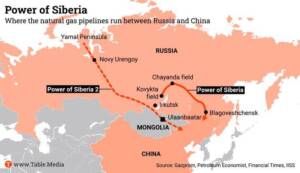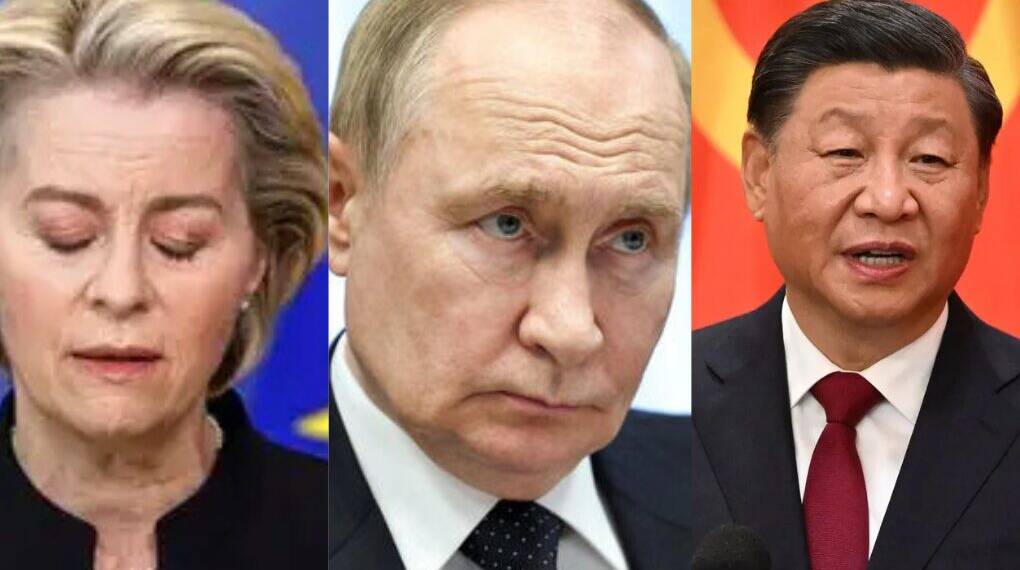For decades, Europe — more precisely, the European Union — thrived on cheap, dependable Russian pipeline gas. It was the invisible fuel behind Germany’s industrial might, powering factories, heating homes, and sustaining Europe’s status as the world’s most competitive high-income economy.
But that era is over.
The same Russian gas that once flowed westward is now being rerouted eastward — to China. With the signing of a historic agreement between Moscow and Beijing, the Power of Siberia 2 pipeline is no longer just an ambitious proposal. It is a geopolitical reality that could reshape global energy flows for generations.
The Gas Pipeline Deal

On September 2, 2025, Russia’s energy giant Gazprom and China’s CNPC (China National Petroleum Corporation) signed a legally binding memorandum to construct the long-delayed Power of Siberia 2 pipeline.
The figures are staggering:
Capacity: 50 billion cubic meters (bcm) of gas per year
Duration: 30 years
Estimated value: $400–450 billion
That equates to 1.5 trillion cubic meters of natural gas, redirected from what could have powered Europe’s economy to fueling China’s industrial heartlands.
For Russia, this is a master stroke — the largest, most ambitious, and most capital-intensive gas project in the world.
For China, it ensures stable, long-term energy supplies at prices cheaper than volatile LNG imports from the United States and the Middle East.
And for Europe, it represents yet another blow to energy security — a self-inflicted wound born from what many now describe as years of strategic miscalculations.
Why It Matters for Russia?
For Moscow, this pipeline is more than just steel in the ground. It is a lifeline.
Since the conflict in Ukraine erupted in 2022, Russia has faced sanctions, energy boycotts, and an EU roadmap to phase out Russian gas by 2027. European leaders once assumed this would cripple Moscow’s energy economy.
Instead, Russia has found an alternative. Gas that once flowed across Ukraine or the Baltic Sea will now travel across Mongolia into China.
With this single deal, Russia secures:
A new market for its stranded Yamal gas reserves.
A 30-year contract shielded from Western sanctions.
A deepened strategic partnership with Beijing.
For the Kremlin, this isn’t just economics. It’s politics — a demonstration that Russia cannot be isolated. If Europe closes one door, Asia will open another.
Why It Matters for China?
If Russia gains a market, China gains leverage.
Beijing has long diversified its energy mix: oil from the Middle East, LNG from Australia, and pipeline gas from Central Asia. It has never wanted to rely too heavily on one supplier. Yet, with Power of Siberia 2, China secures three strategic advantages:
Energy Security
A steady overland pipeline cannot be blockaded in the Pacific or Indian Oceans. Running safely through Mongolia, it bypasses contested maritime choke points like the Malacca Strait.
Cost Advantage
Pipeline gas is significantly cheaper than LNG, which involves costly liquefaction, shipping, and regasification. With Russia offering fair market prices, China reduces its reliance on U.S. and Qatari LNG.
Geopolitical Leverage
Every cubic meter of gas flowing east is one less flowing west. Beijing gains influence as Russia’s most important energy customer while tilting the global energy balance further away from Western dominance.
Europe’s Energy Slowdown
This is where the consequences bite hardest.
Europe, once the world’s most attractive gas market, is now left scrambling. Instead of low-cost Russian pipeline gas, European industries must rely on high-cost LNG imports from the U.S. and the Middle East.
The outcome is predictable:
Higher energy bills for households and businesses.
Higher inflation across the continent.
A weakened industrial base, particularly in Germany, is the EU’s economic engine.
Factories that once gave Europe global competitiveness now face costs that Chinese competitors — backed by cheap Russian gas — do not.
As Kirill Dmitriev, head of Russia’s sovereign wealth fund, bluntly remarked:
“Low-cost, dependable Russian gas that powered Europe’s success will now power China’s.”
Mongolia: The Silent Winner
There is one quiet beneficiary in this story: Mongolia.
For decades, Ukraine profited as a transit hub for Russian gas heading into Europe. With Power of Siberia 2, Mongolia assumes this role. The pipeline will generate billions in transit fees and elevate Ulaanbaatar’s importance as a strategic energy corridor between Moscow and Beijing.
Geopolitical Implications
This pipeline is far more than a construction project. It is a geopolitical statement.
It signals the rise of a new Eurasian energy axis — Russia, China, and Mongolia, with ambitions that could one day extend to India — standing in direct opposition to Western dominance.
It underscores the limits of Western sanctions. No matter how much Brussels or Washington attempts to isolate Moscow, Russia finds new partners. Beijing, in particular, is willing to fill the gap.
It highlights Europe’s vulnerability. Leadership in Brussels may change in the coming months or years, but the consequences of past decisions — high energy prices, inflation, and deindustrialization — will haunt Europe for decades, perhaps centuries.
And it crystallizes a sobering reality: while Europe overpays for energy, China consolidates its long-term advantage — an advantage that accelerates its rise as a global superpower, challenging both the U.S. and the EU.
As the global energy map is redrawn, one truth stands clear:
What once fueled Europe will now fuel China.
And the world will never be the same again.








